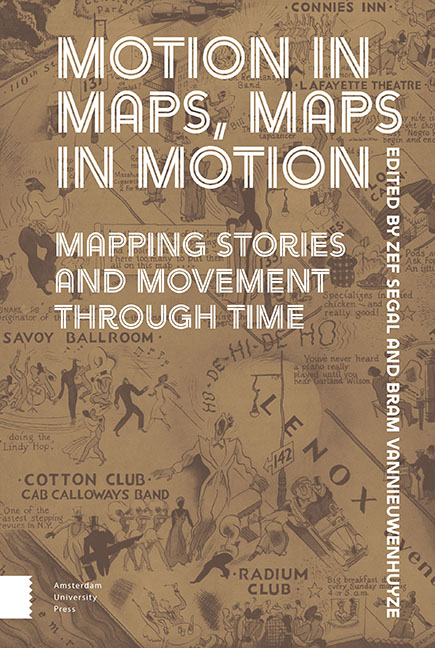Book contents
- Frontmatter
- Contents
- List of Figures
- List of Diagrams
- Introduction
- 1 The New World Map and the Old; The Moving Narrative of Joan Blaeu’s Nova Totius Terrarum Orbis Tabula (1648)
- 2 Entangled Maps; Topography and Narratives in Early Modern Story Maps*
- 3 Flow Mapping through the Times; The Transition from Harness to Nazi Propaganda
- 4 The Tensions of Heterochronicity on Cartographies of Imperial Motion in Japan
- 5 A School Atlas as a History Machine: The Bosatlas Online
- 6 Facebook Cartographies and the Mapping of Local History; Storied Maps from the American Middletown
- 7 ‘Change-of-State’ in the History of Cartography
7 - ‘Change-of-State’ in the History of Cartography
Published online by Cambridge University Press: 20 November 2020
- Frontmatter
- Contents
- List of Figures
- List of Diagrams
- Introduction
- 1 The New World Map and the Old; The Moving Narrative of Joan Blaeu’s Nova Totius Terrarum Orbis Tabula (1648)
- 2 Entangled Maps; Topography and Narratives in Early Modern Story Maps*
- 3 Flow Mapping through the Times; The Transition from Harness to Nazi Propaganda
- 4 The Tensions of Heterochronicity on Cartographies of Imperial Motion in Japan
- 5 A School Atlas as a History Machine: The Bosatlas Online
- 6 Facebook Cartographies and the Mapping of Local History; Storied Maps from the American Middletown
- 7 ‘Change-of-State’ in the History of Cartography
Summary
Abstract
Five static graphic strategies support the transition from one spatial pattern to another. Chess maps, as a telling sequence of instantaneous views, use a common geographic framework to narrate a geographic story. By contrast, rate-of-change maps use numerical measurements to describe spatial variation in the rapidity or slowness of change. A third type, the dance map, mimics the step-by-step footwork of rehearsed choreography, analogous to the movements of troops, materiel, and intelligence in a military campaign (A highly focused dance map, the centrographic map, treats a spatial-temporal narrative as a statistical summary.) Additional strategies include flow maps and frontal maps, a military/meteorological analog. Dynamic cartography and the interactive manipulation of history maps afford new insights as well as alternative interpretations.
Keywords: Dynamic cartography; graphic sequences; historical narrative; story map; typology
As the foregoing chapters indicate, a recurring theme in map history is the graphic portrait of change from one spatial pattern to another. A geographic ‘change of state’, to borrow a term from chemistry and atomic physics, might be as cartographically straightforward as when an election alters power relationships and produces a new pattern of local or regional electoral dominance. The simplest case is the juxtaposition of two maps, to show the old and the new, or the before and the after. If provincial boundaries are static, these maps are akin to chessboard diagrams depicting the locations of queens, bishops, and other chess pieces at different stages of a game, which makes it appropriate to call them chess maps. This chapter attempts to codify narrative cartography by identifying a set of distinctive types of change-of-state maps. It concludes with a few suggestions for further research.
Although a mere pair of chess maps can describe a noteworthy shift, three or more maps representing the outcomes of successive elections can sustain a longer, more interesting narrative such as a story of progressive, far-reaching change or an oscillation of control, as when a political party achieves dominance, falters and loses control, and then rebounds. Arranged in temporal order like a series of snapshots, chess maps can emphasize a simple explanation or introduce a potentially richer story in which a verbal narrative is supplemented by statistical graphics, photographs, and other maps.
- Type
- Chapter
- Information
- Motion in Maps, Maps in MotionMapping Stories and Movement through Time, pp. 177 - 184Publisher: Amsterdam University PressPrint publication year: 2020

